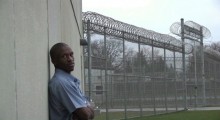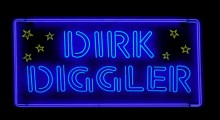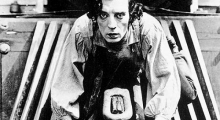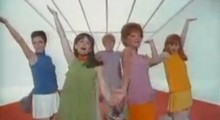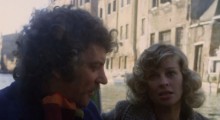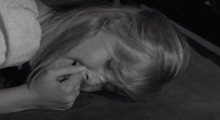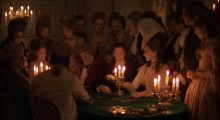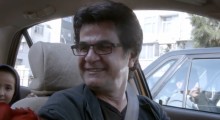Filmmaker Videos
-
The Cooler Bandits Screening and Discussion at Columbia University on February 26

Followed by what promises to be an amazing discussion between filmmakers and subjects alike, John Lucas’s documentary The Cooler Bandits will be screened Thursday, February 26 in New York at Columbia University. The event is free and open to the public. For Filmmaker, Alix Lambert wrote about the film and talked to Lucas while The Cooler Bandits was in post-production. An excerpt: The Cooler Bandits is the film’s title as well as the crew consisting of Charlie, Donovan, Frankie, and Poochie, who were all teenagers in 1991 when they spent the better part of the year robbing restaurants. Collectively they […]
-
Watch: Objects and Close-Ups in Boogie Nights

This one’s zippy: a two-minute supercut of close-ups of objects and gestures in Boogie Nights, mostly the former. Taken out of context, a formidable amount of art direction and fetishistically shiny framing comes to the forefront. Entitled “Boogie Nights — Close-ups, Objects etc.,” this is the first video uploaded to the Vimeo channel of Justin Barham, who notes, plaintively, “If I knew people were going to actually see it I’d have given it a cool title.”
-
Watch: Why Gordon Willis’ Lighting in Interiors is Another Character Element

In conjunction with the Museum of Moving Image’s first ever cinematographer-centric retrospective, Reverse Shot has produced a small tribute to Gordon Willis’ work on Woody Allen’s Interiors. Staging their own recreations of the film’s many portraits, editors Michael Koresky and Jeff Reichert examine how Willis’ lighting contributes to the emotional interiority of Diane Keaton’s character, Renata. By casting her in shadows for the majority of the film, Willis reinforces her isolation. It’s an important consideration of how cinematography can not only set the external tone of a film, but also play a necessary role in the characterization of its inhabitants.
-
Watch: Buster Keaton’s Symmetrical Sense of Humor

kogonada first caught our eye two years back with his exploration of symmetry in the works of Stanley Kubrick, followed by Wes Anderson a year later. But before both auteurs were associated with a centered, exacting aesthetic, Buster Keaton applied a looser construct of symmetry to his brand of physical comedy. The above video from Vince di Meglio looks at how the central framing of nearly 30 of Keaton’s films allows for head-to-toe humor in relation to both objects and space.
-
Watch: Michael Cimino’s 1967 United Airlines Commercial

In his first interview in 13 years, The Deer Hunter/Heaven’s Gate director Michael Cimino sounds off on the greatness of American Sniper and why Clint Eastwood should be president, writing novels published in France he’s afraid to have published in the US, and much more. It’s a good time to revisit the start of Cimino’s career, when he was a Madison Avenue commercial director, and a very successful one at that. This 1967 ad was part of a $1.7-million United Airlines campaign and it’s very of the period — literally colorful, musically brassy, casually sexist. More background on the commercial here.
-
“I Deliberately Cut an Unusual Rhythm”: Graeme Clifford On Editing Don’t Look Now

In this excerpt from the Criterion Collection’s supplements for their now-out edition of Nicolas Roeg’s 1973 Don’t Look Now, Graeme Clifford discusses the fine art of keeping people off-balance without being too obvious about it. “There is a comfortable way of editing, where people want to be unaware of cuts,” he explains. “In most movies, that’s generally the way you want to go. But in this movie, I deliberately cut an unusual rhythm. I would hold shots when there’d seem to be no reason to do so, or I would cut off them too quickly, or I would cut to things that were […]
-
Watch: A Video Essay on Robert Altman’s TV Work

Robert Altman’s formative years working in episodic television are examined by Violet Lucca in this Film Comment video essay. Highlighting one of his two Alfred Hitchcock Presents episodes, Lucca argues its foregrounding of a disintegrating female psychopath anticipates Altman’s later studies of women with fragmented psyches (Images, Three Women). After finding his autuerist signature on Bonanza! and examining one of his most famous contributions to Combat!, the essay concludes with a look at Altman’s Bus Stop episode “A Lion Walks Among Us,” controversial enough amongst widespread hysteria about juvenile delinquency and violence on TV to merit Congressional questioning of ABC president Oliver Treyz.
-
“I Never Had Any Interest in Becoming a Cinematographer Until 1965, When I Met Stanley Kubrick”: A Rare Profile of d.p. John Alcott

Here’s a true deep cut, evidently taped off New Jersey’s WNET and now resurrected on the internet. This ’80s profile of d.p. John Alcott (A Clockwork Orange, Barry Lyndon) features a lot of on-set footage of the cinematographer plying his craft; if you’re a big Beastmaster fan, this is for you. If just interested in the Kubrick stories you may want to skip to the 8-minute mark (where the d.p. talks about his initial collaborations with the director) and then to 14:20 or so, where Alcott discusses waiting patiently to capture very particular wind and cloud changes on the set of Barry […]
-
Shooting Romance in NYC with the iPhone 6

Here’s a nifty behind-the-scenes featurette on the iPhone 6 shooting of Tristan Pope‘s short film, Romance in NYC. The film is shot entirely from the first-person perspective, like Lady in the Lake and Enter the Void, and the mobility of the iPhone enabled the director/camera operator to play the role of the first-person protagonist. As you’ll see in the video, Pope lets his own hands and arms enter and exit frame, aided by variety of gear — including a Gorillapod — as well as well-choreographed production assistants.
-
Watch: Two Scenes from Jafar Panahi’s Taxi, the Iranian Director’s Third Feature Made During a 20-Year Ban

“Either you have to escape the country or start hoping to go back to jail,” a woman sitting in the passenger seat tells Jafar Panahi in the first clip shared from the Iranian director’s latest feature Taxi. Driving a cab through Tehran and conversing with passengers, Panahi is again the star in his third feature since a 20-year-ban on filmmaking imposed by the Iranian government. In another clip, a young girl reels off a checklist of guidelines necessary to make a distributable film in Iran (headscarves on women, no relations between the genders). The winner of the Berlin Film Festival’s […]
